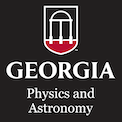The 21st Century promises a major expansion at the interface of physics with the life sciences. These areas fall outside the conventional boundaries of the scientific disciplines and require a collaborative, multidisciplinary approach. What I hope to show you in this talk is that we have built on techniques and inspirations from physics, particularly condensed matter physics and computational physics, to make exciting progress in understanding a disease called age-related macular degeneration (AMD), which is the leading cause of blindness in adults.
We have developed a mechanistic model and studied the growth, patterning and progression of the disease. This allowed us to explore and quantitatively test many more combinations of hypotheses and parameter choices than would have been experimentally feasible. As a result, we have uncovered new mechanical instabilities that will have a significant effect on the future development of targeted intervention strategies and clinical treatment of AMD.


